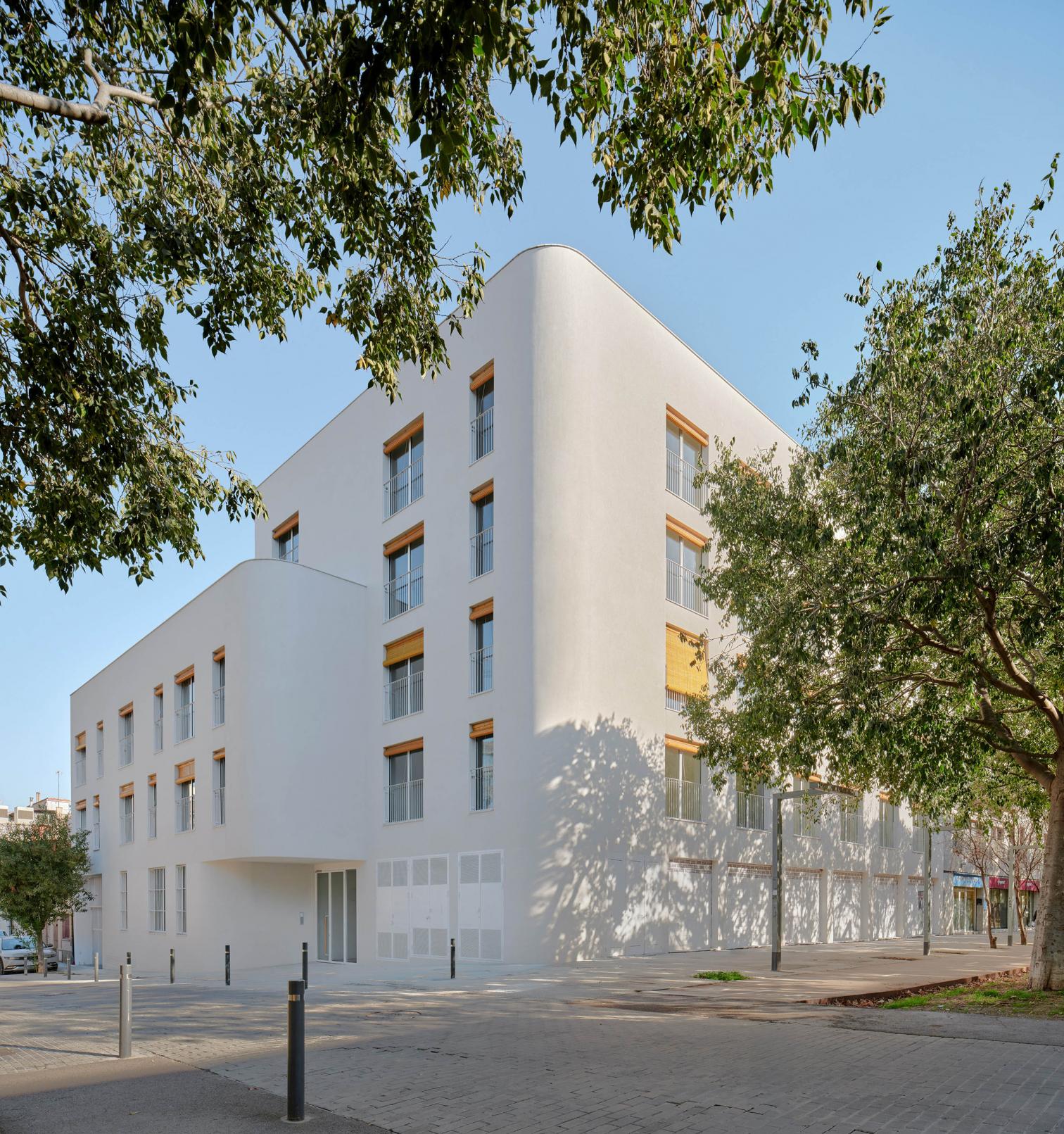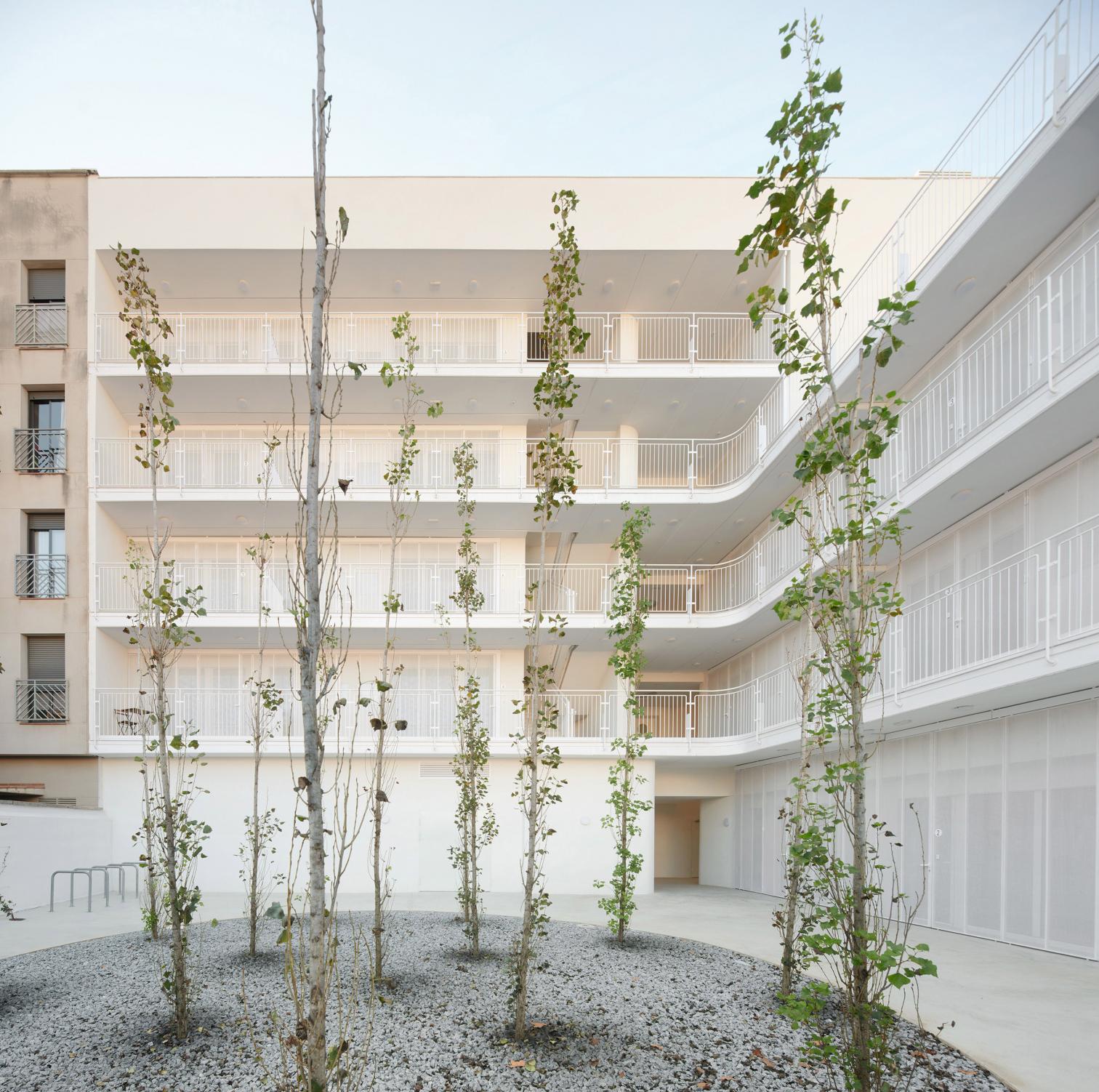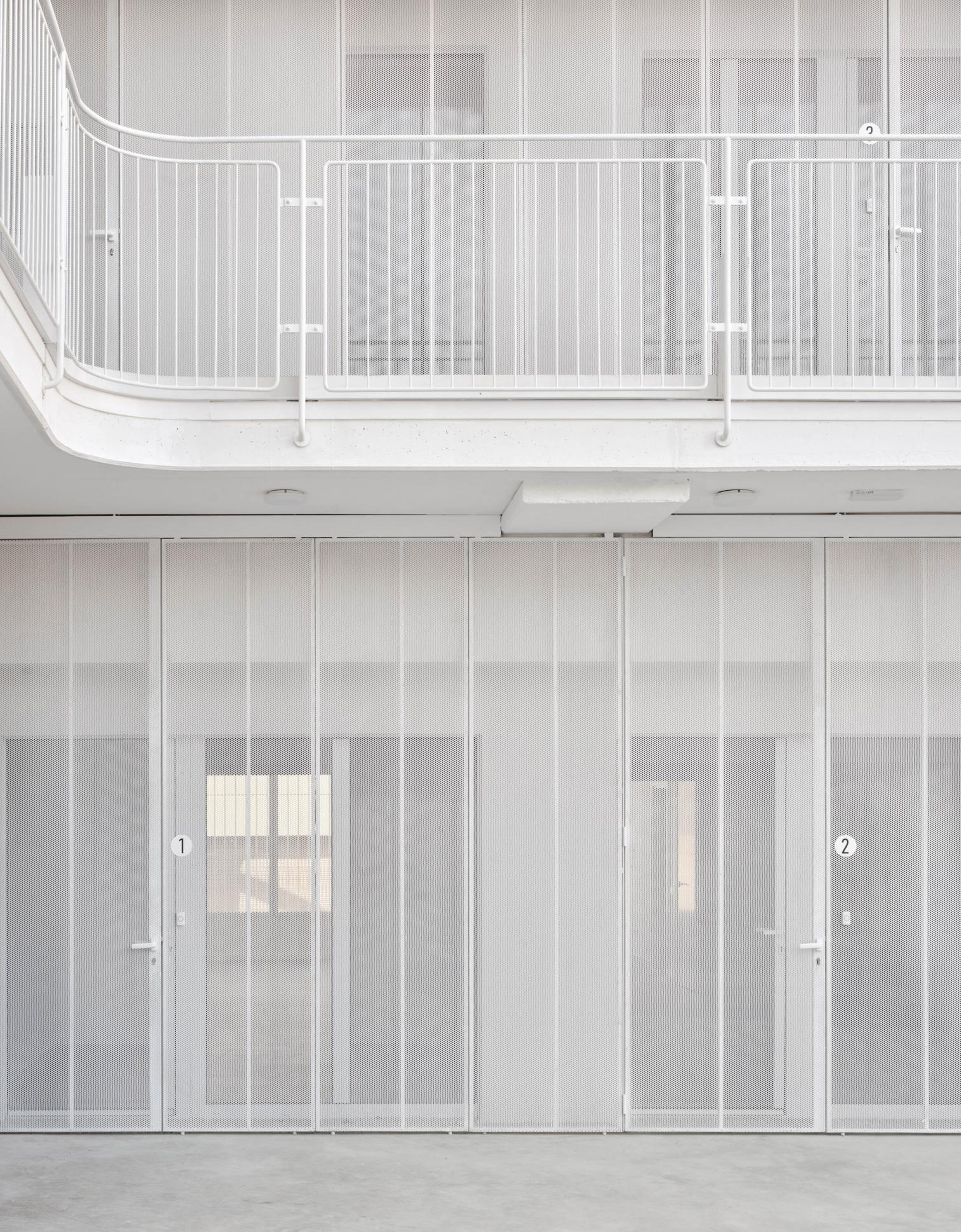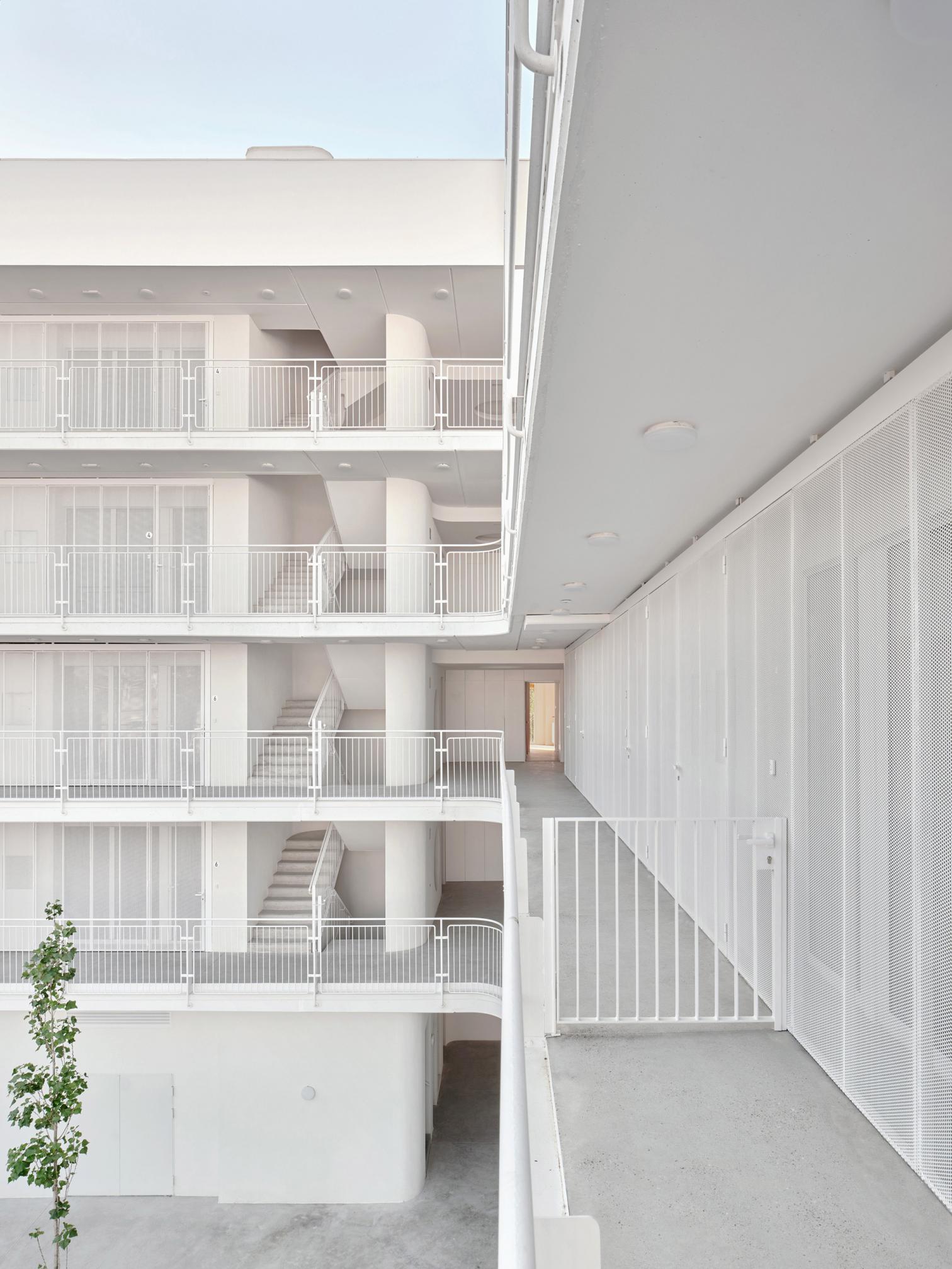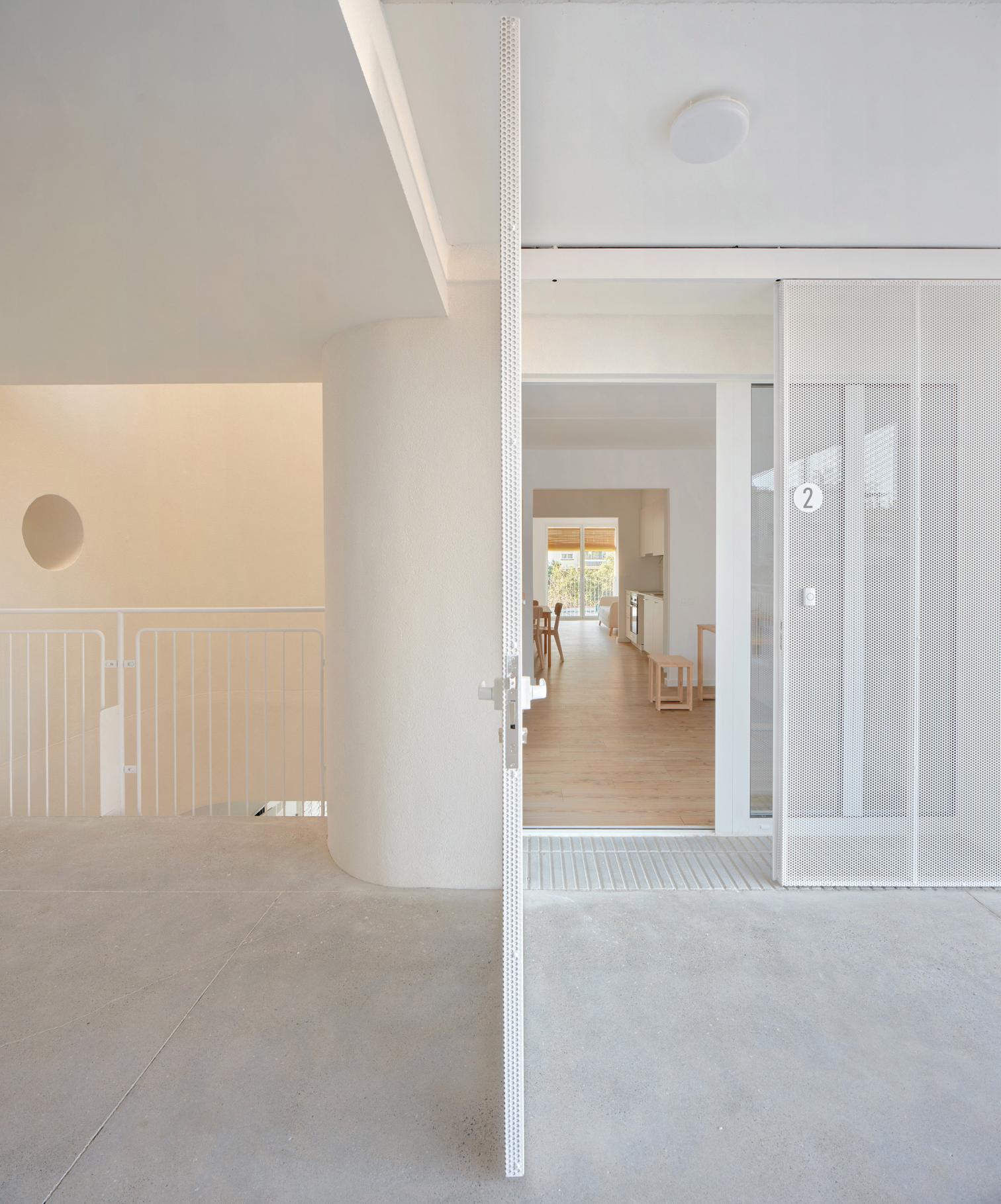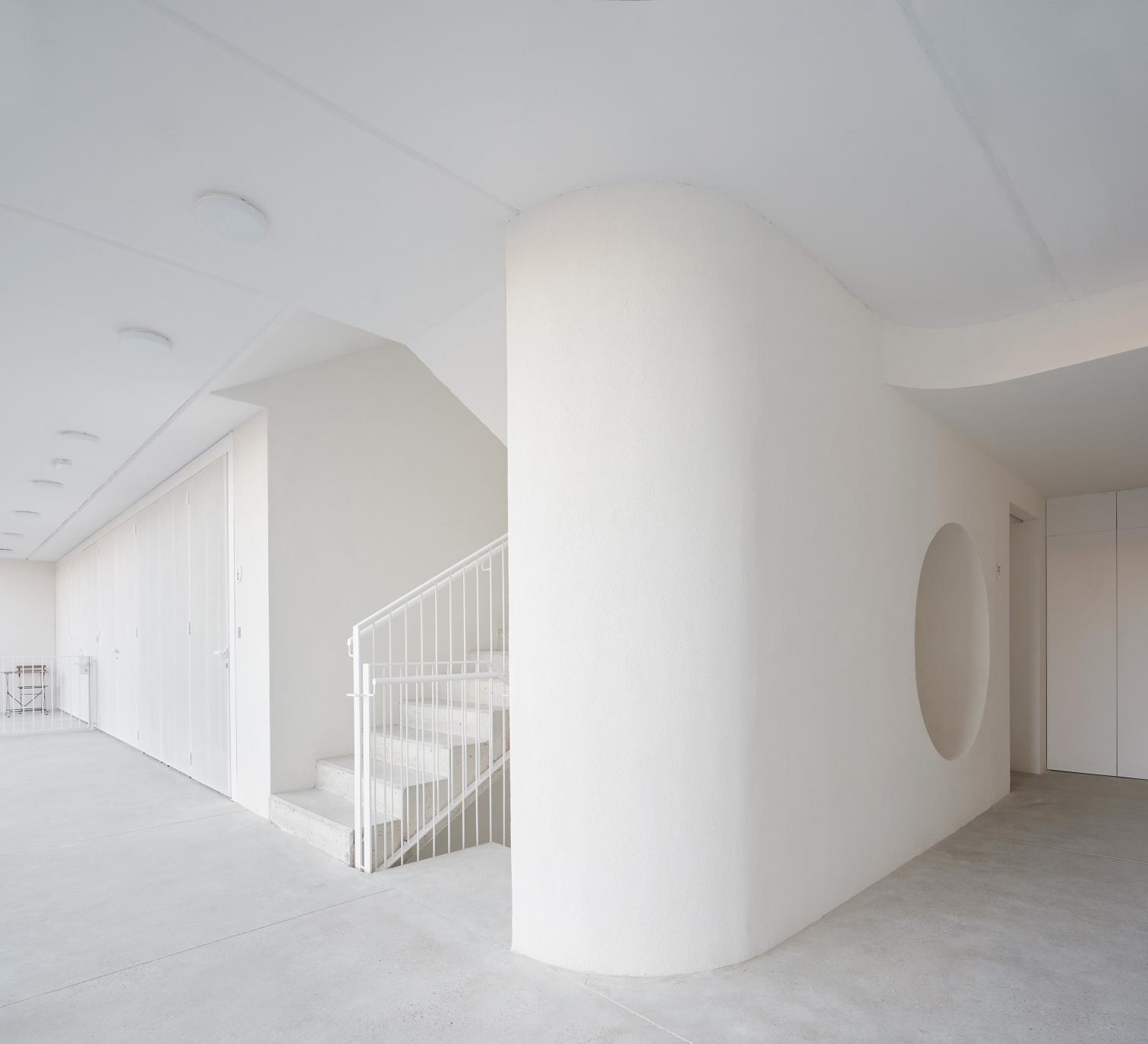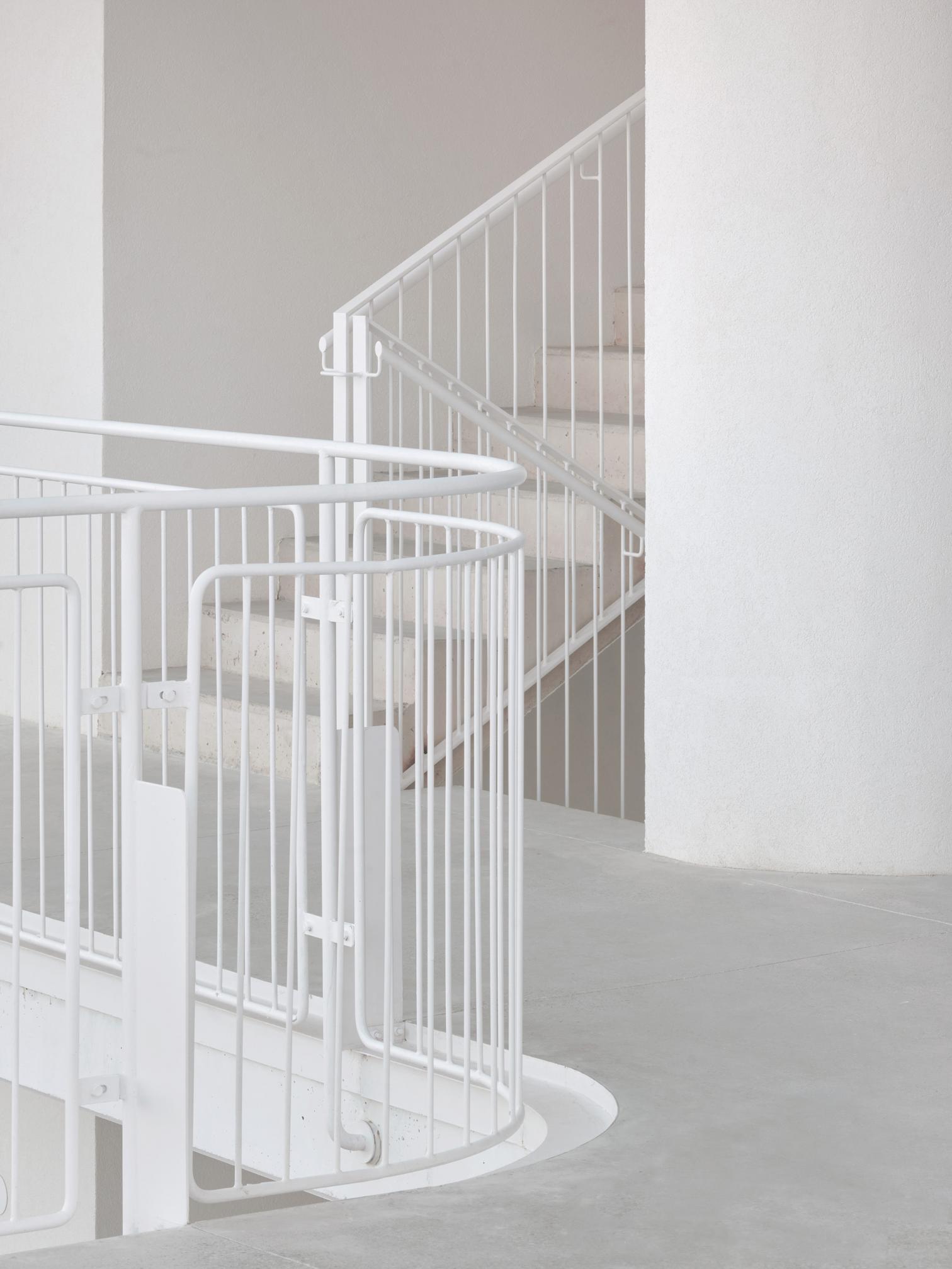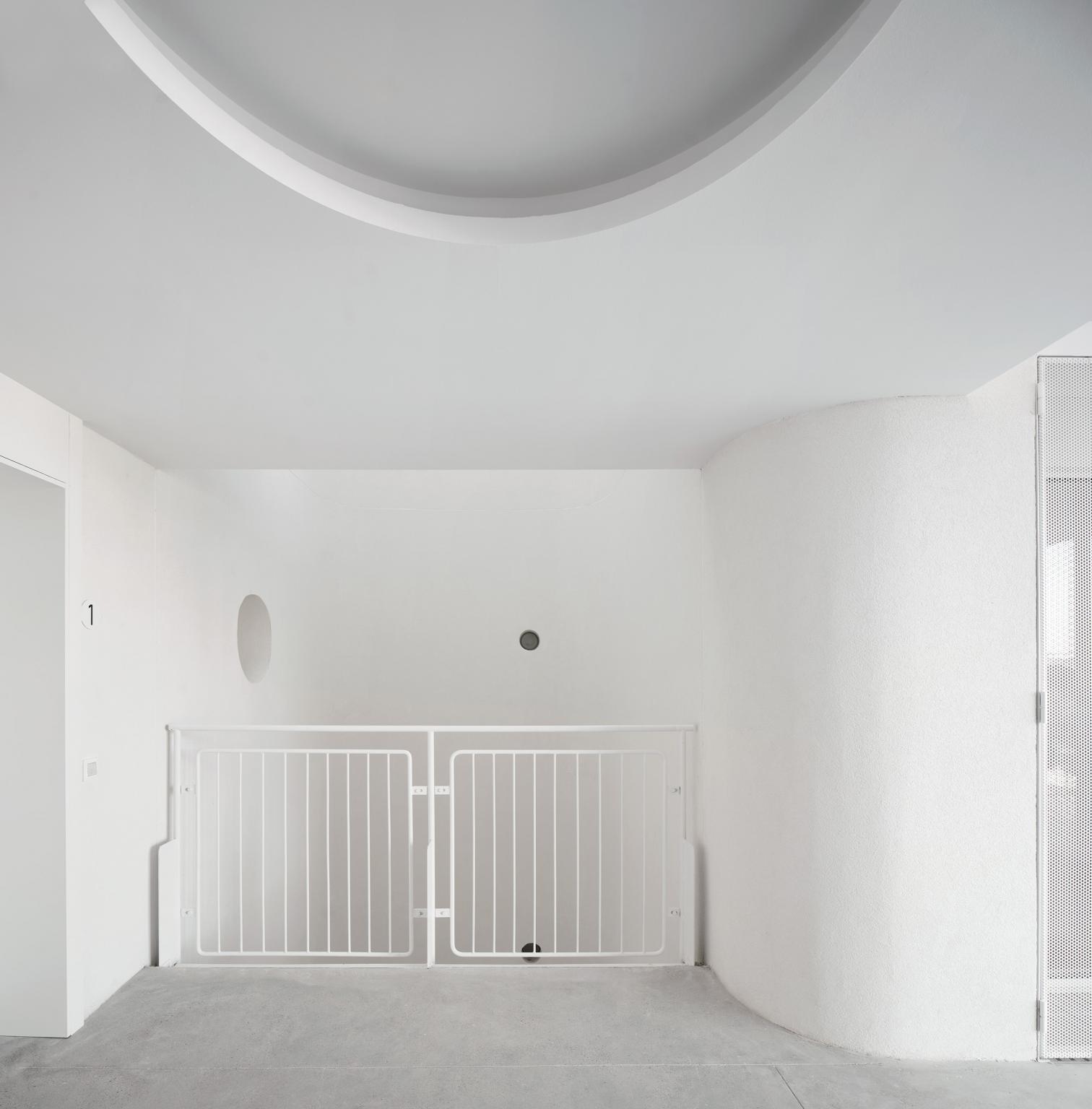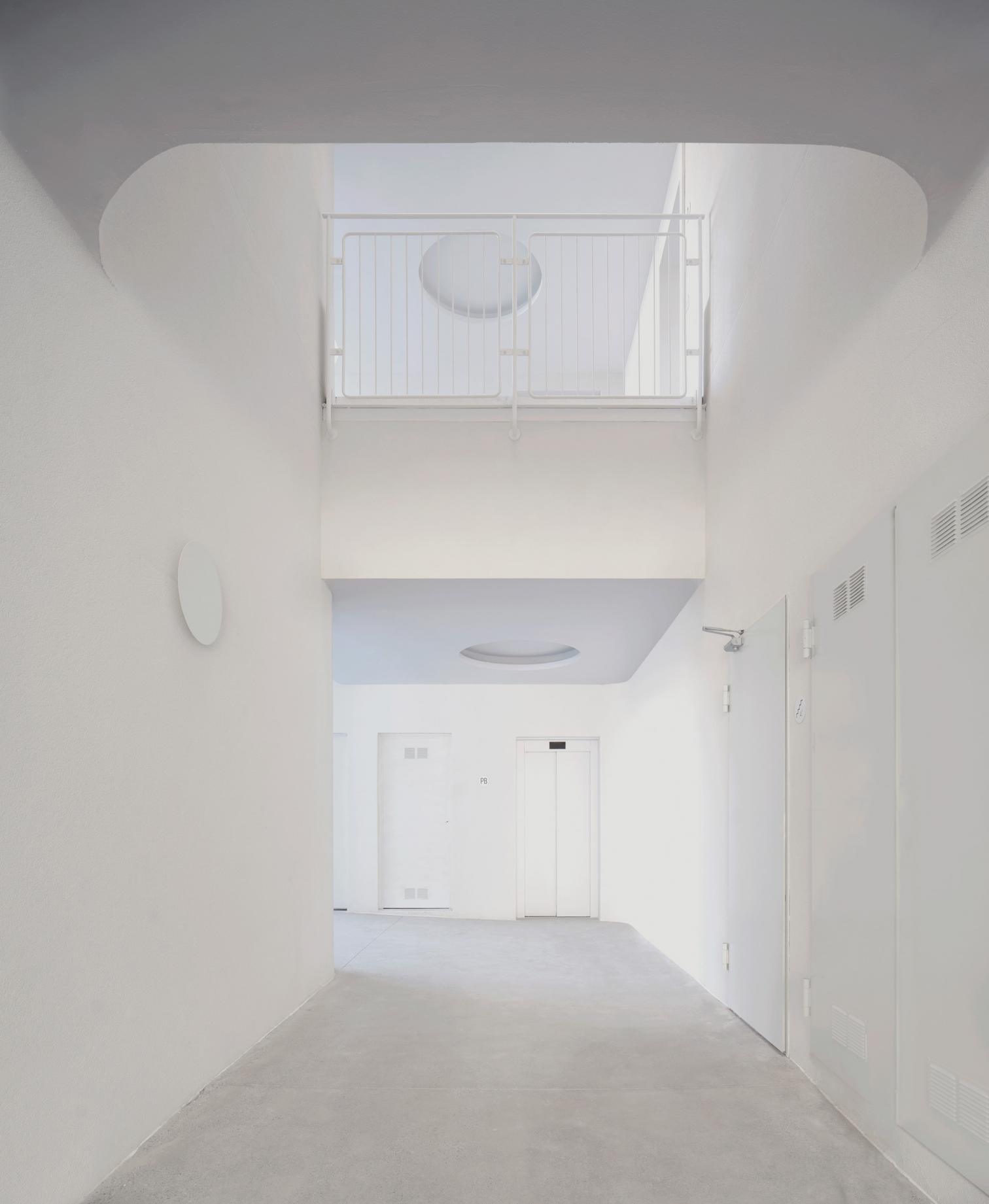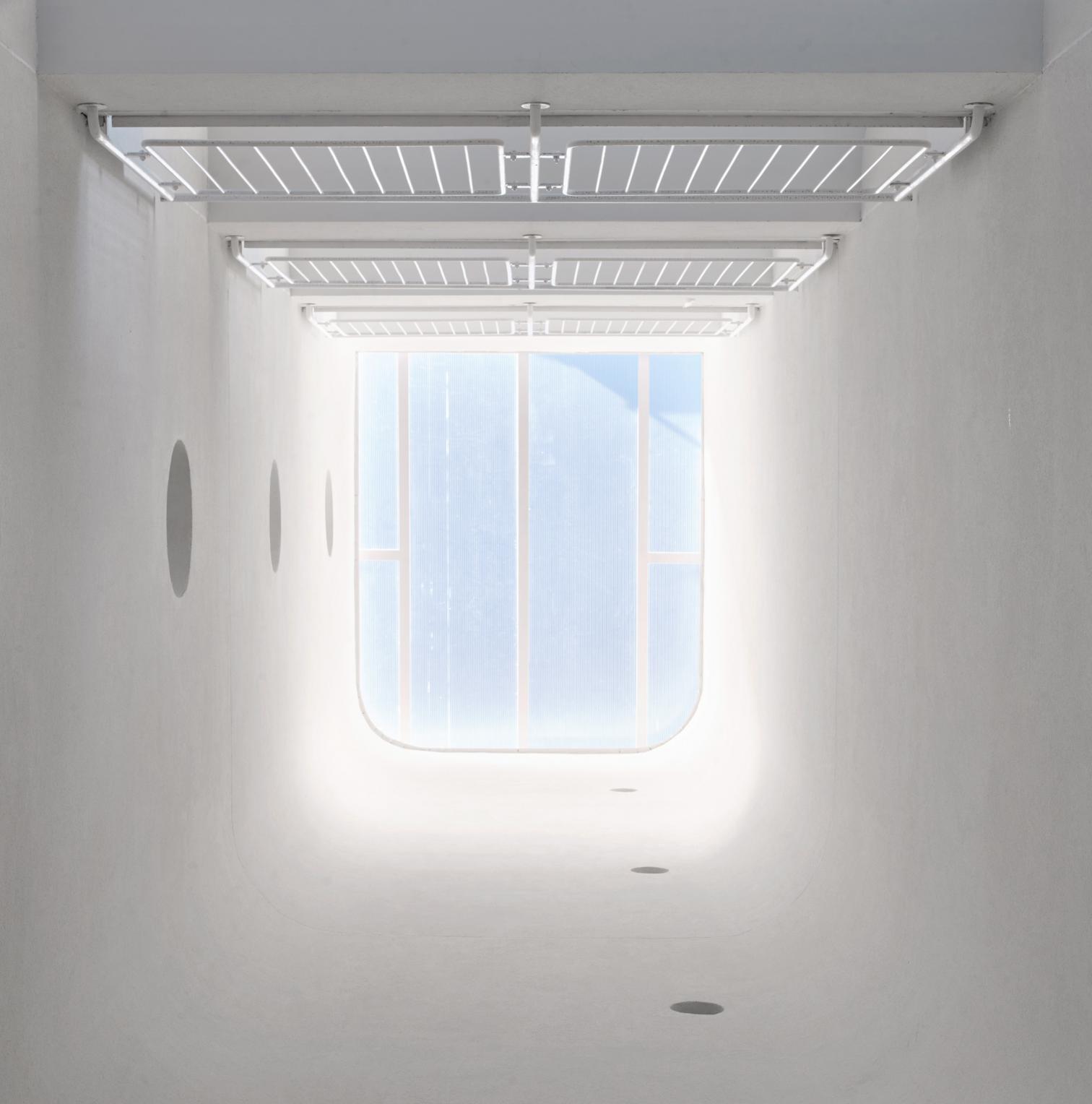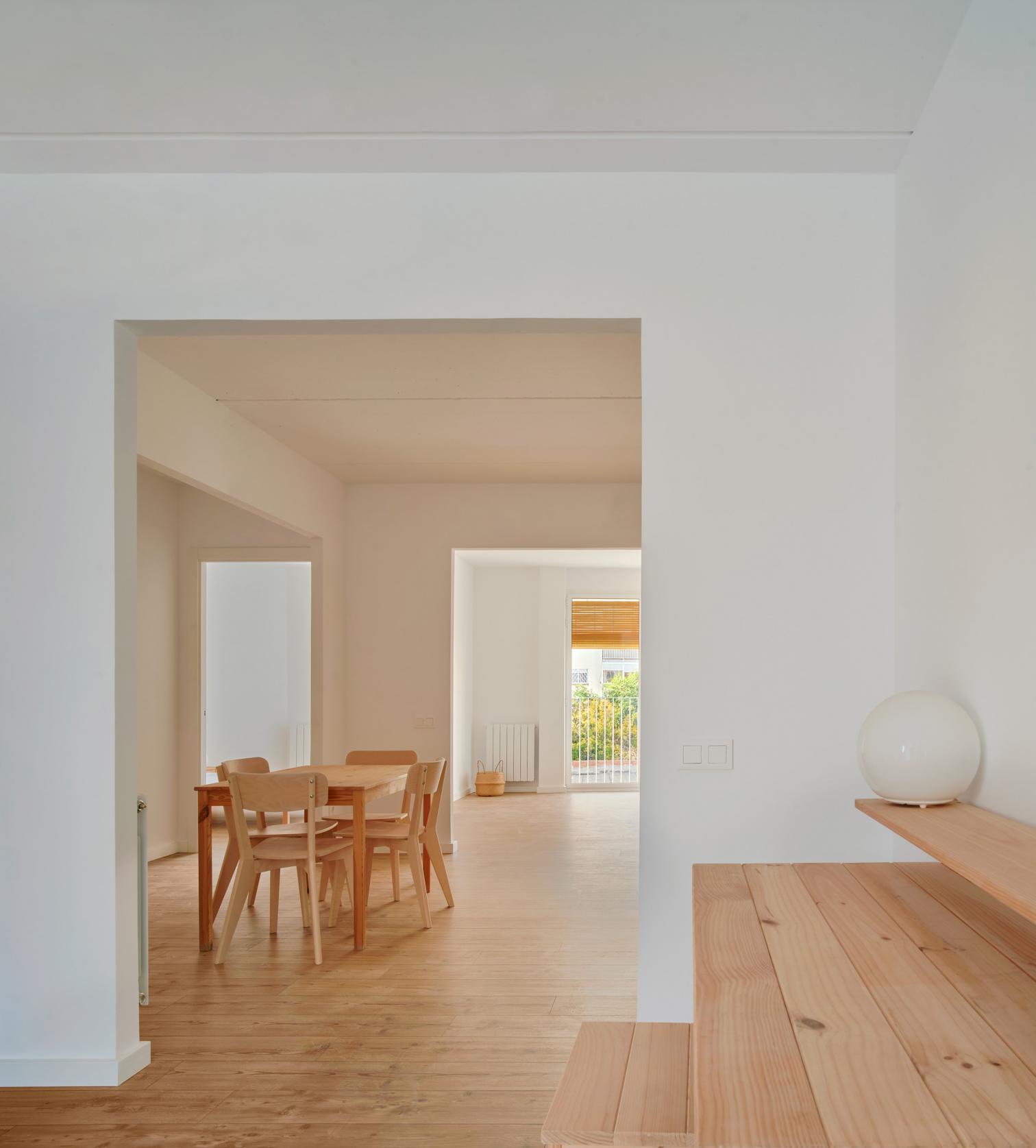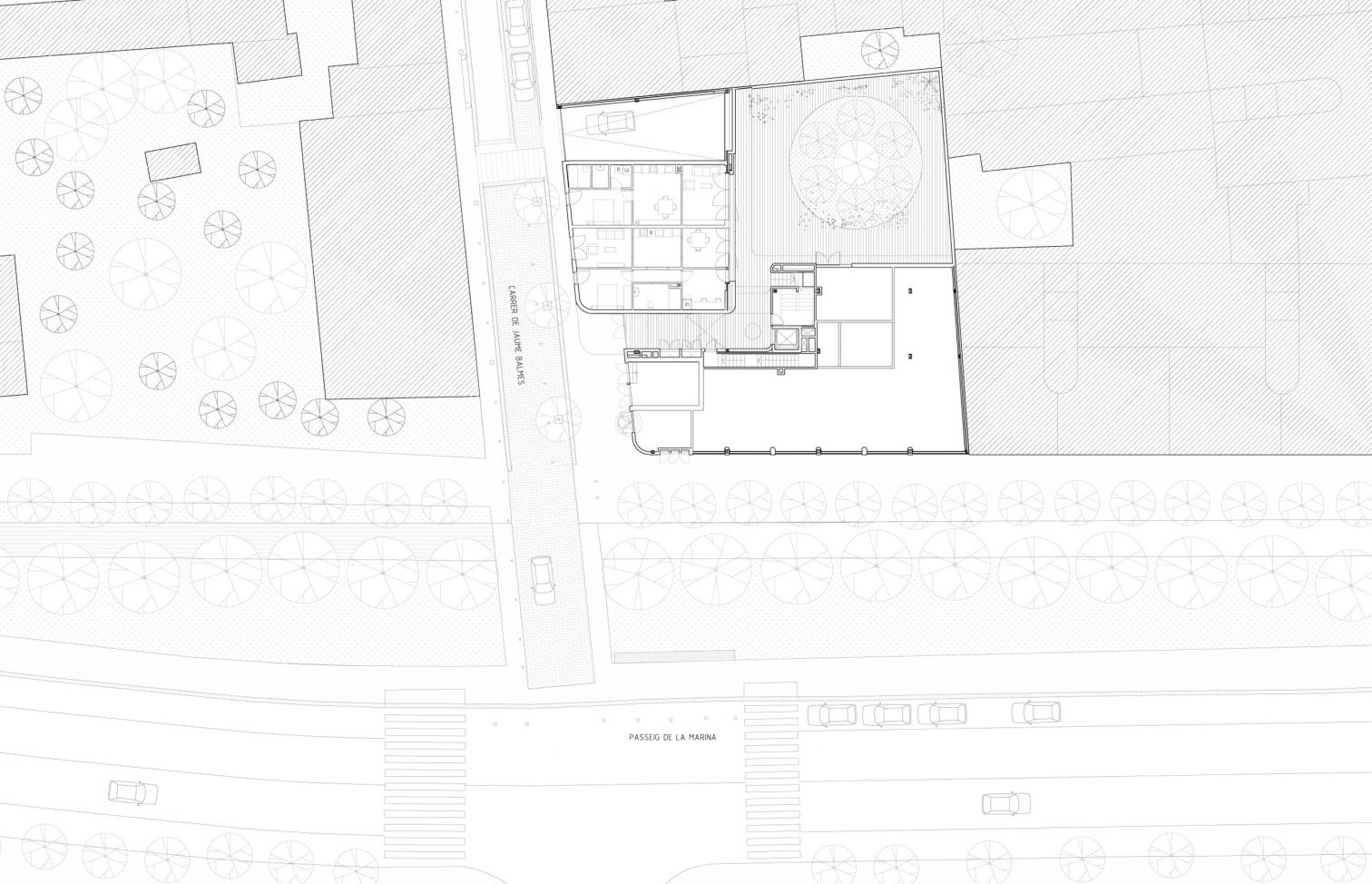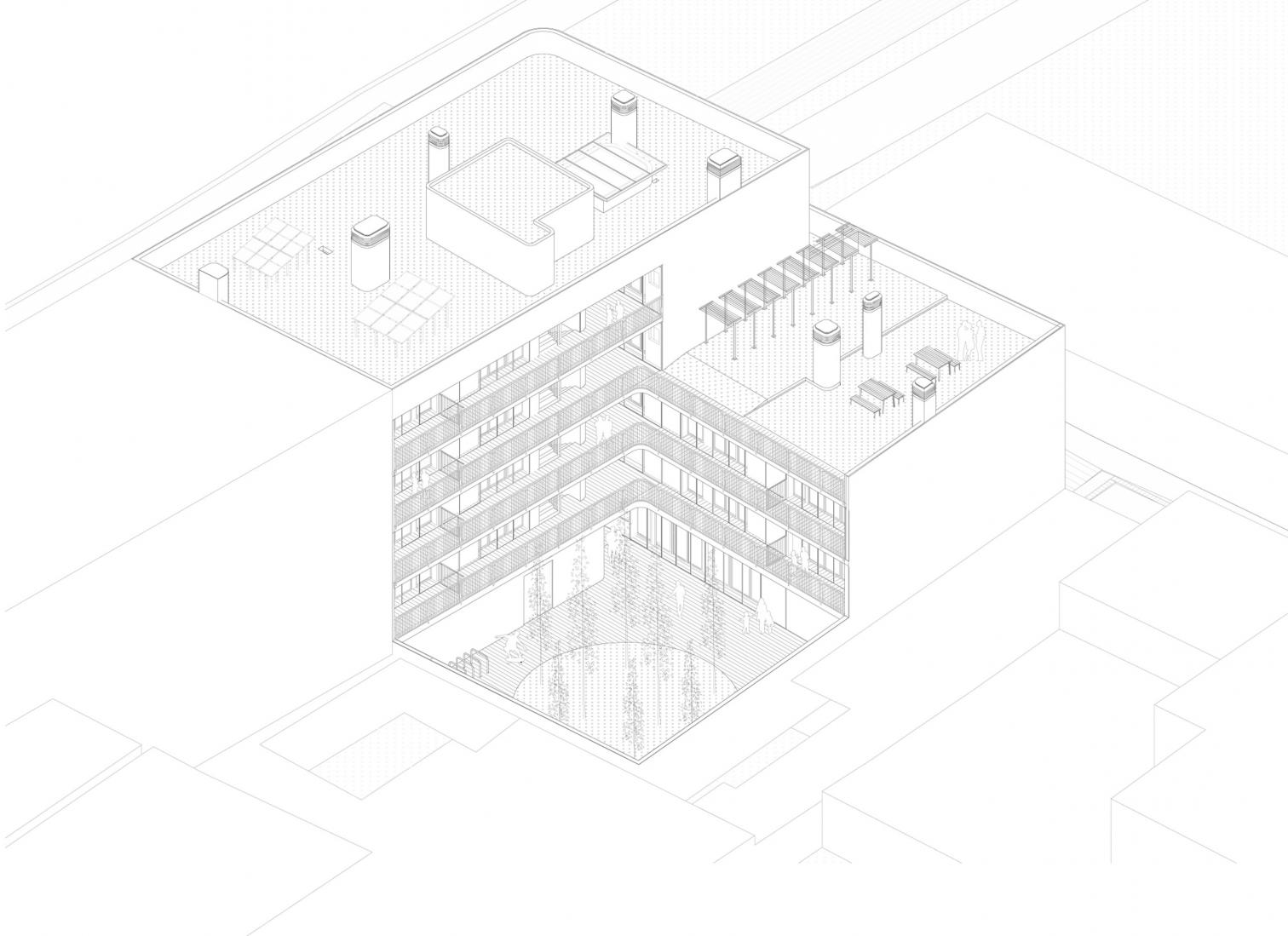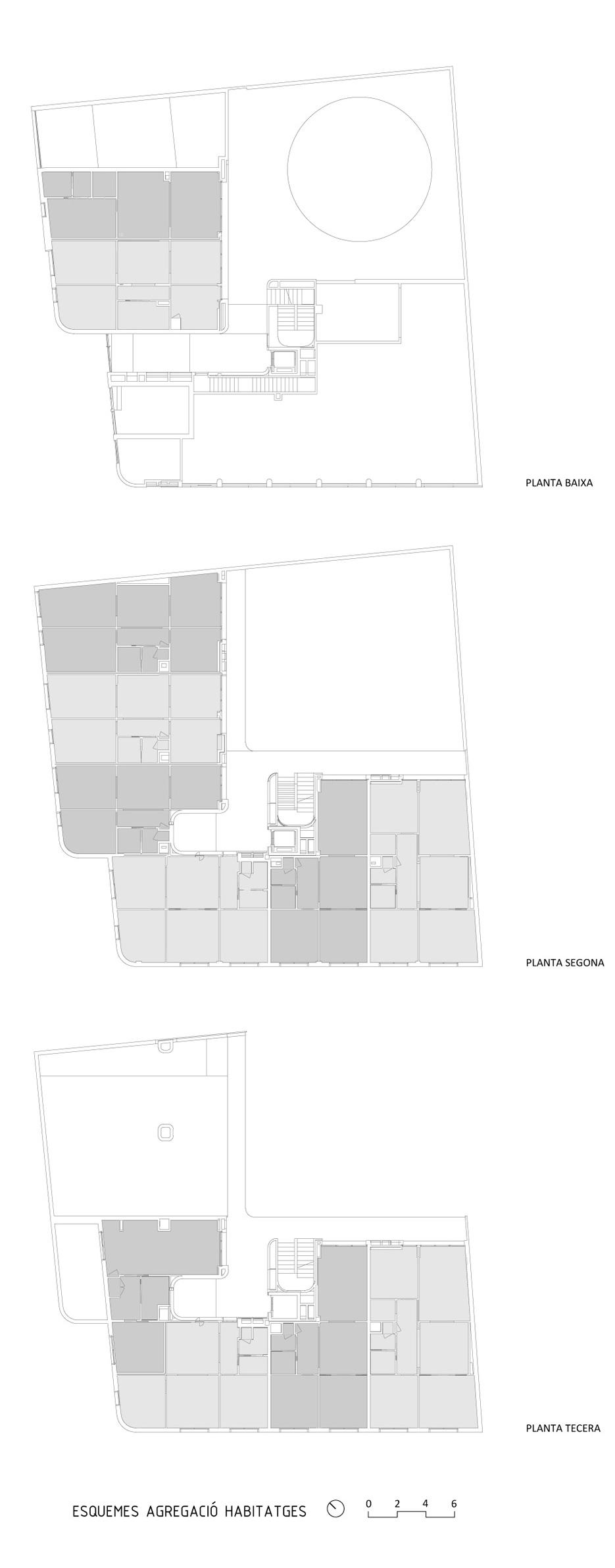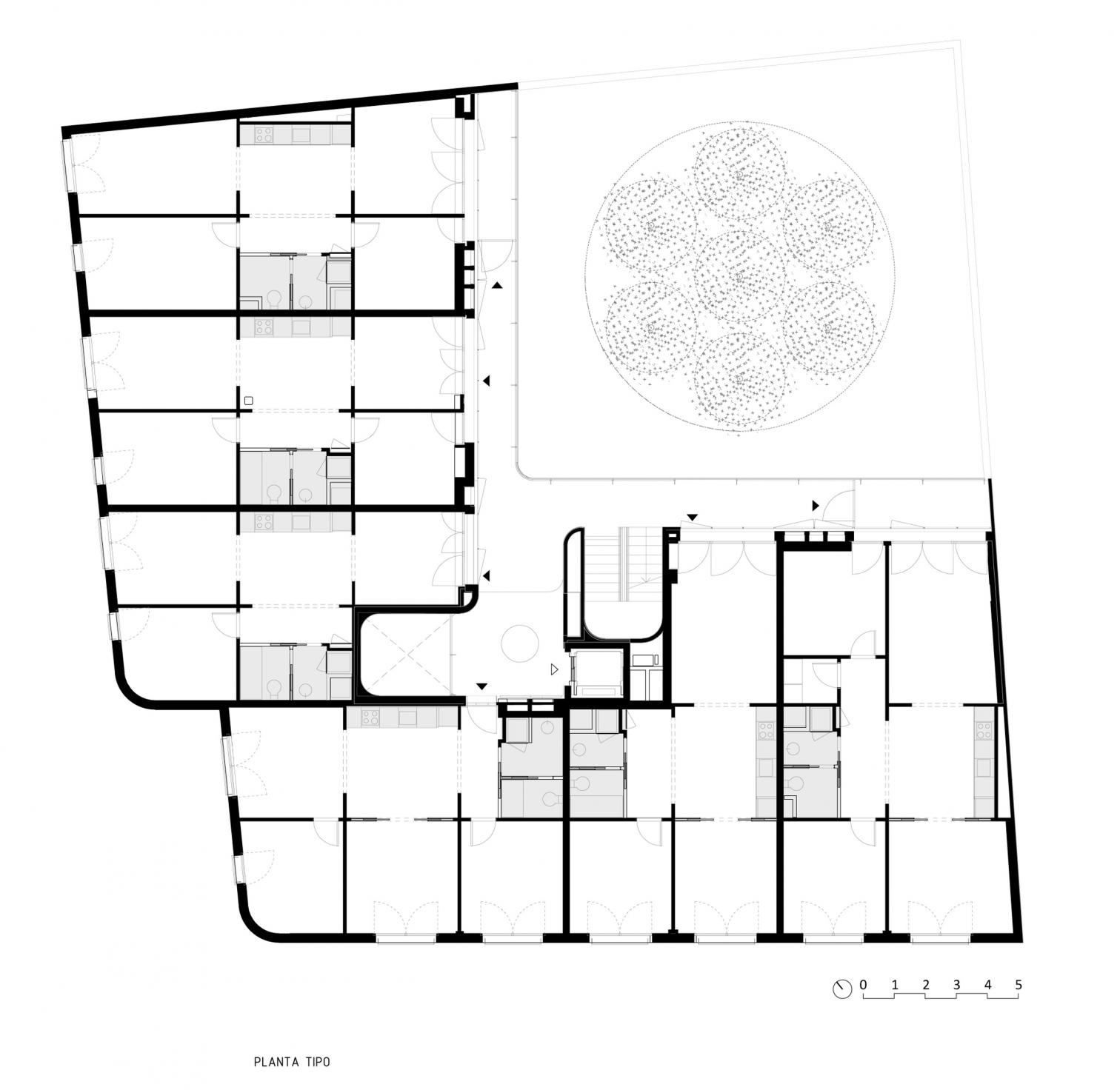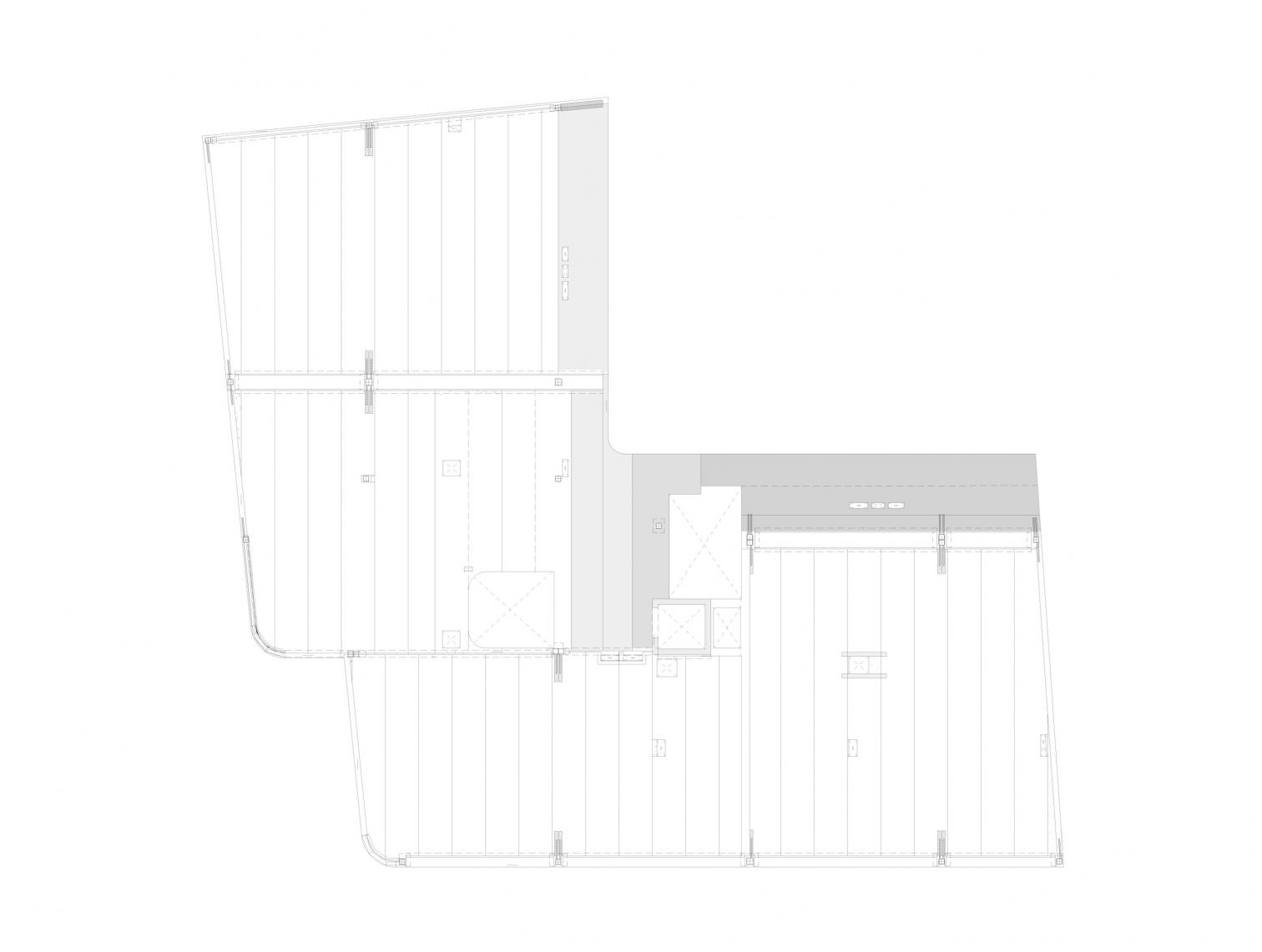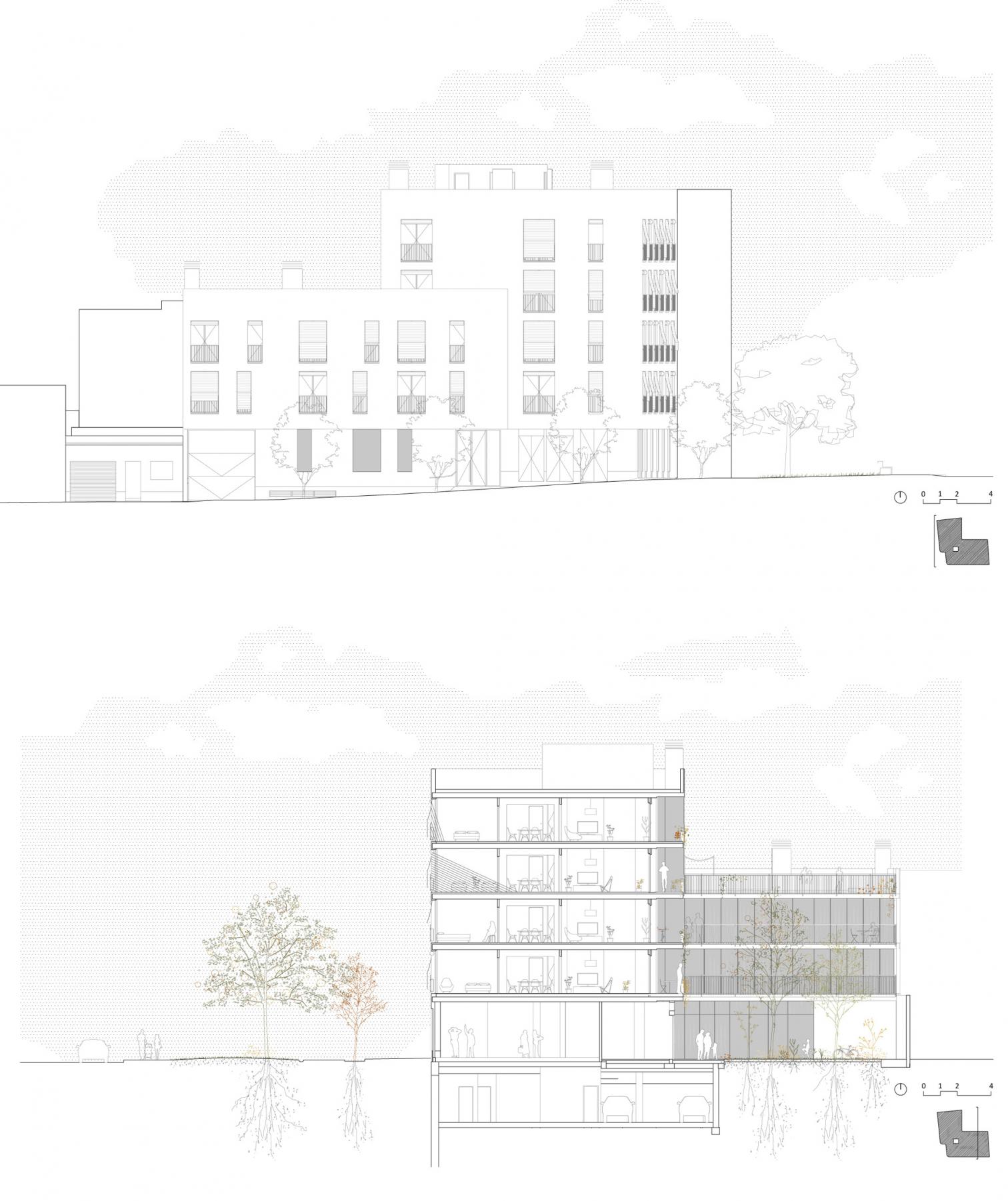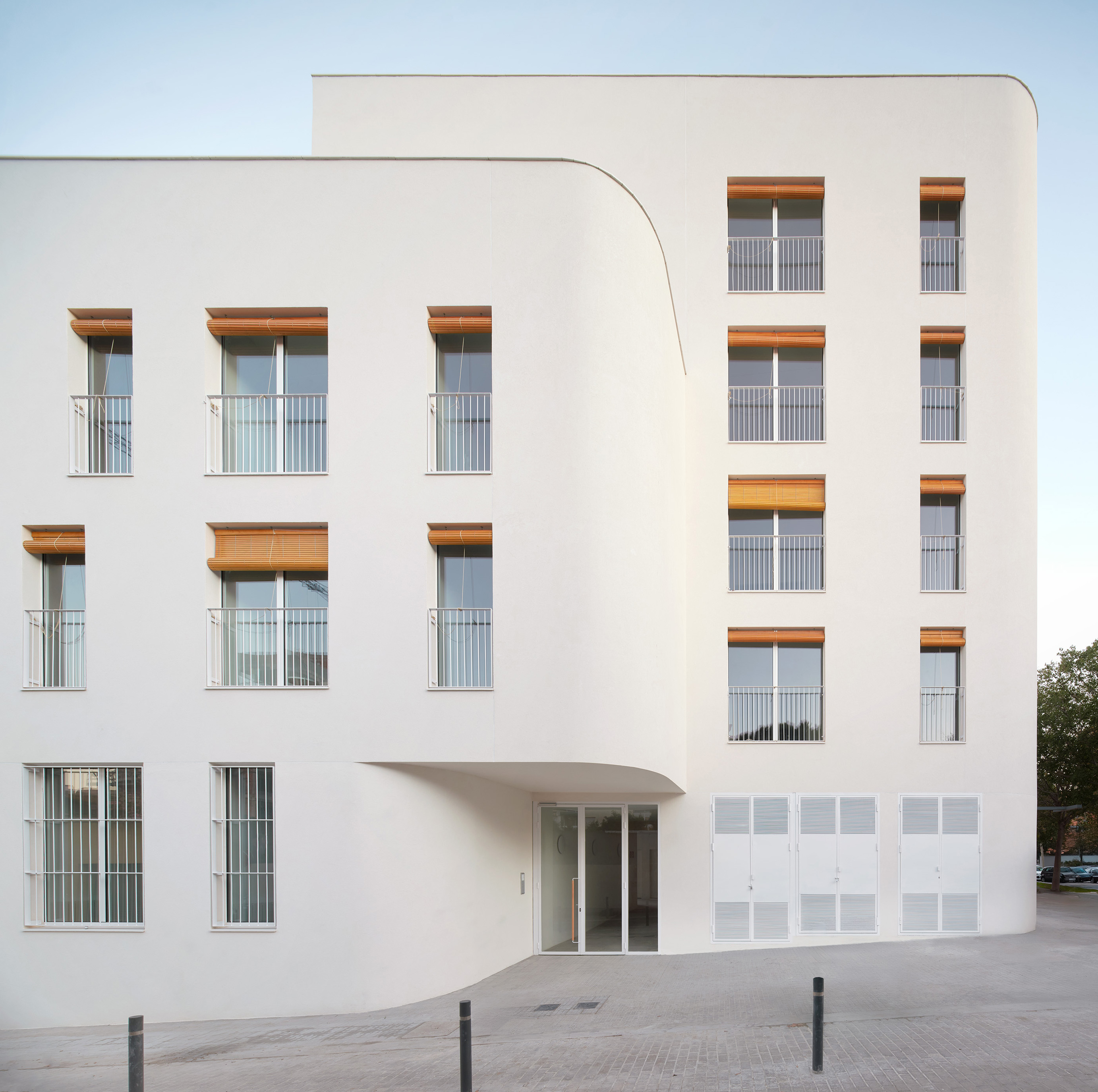22 social-housing units in Viladecans (Barcelona)
AV62 Arquitectos Calderon-Folch Arquitectes- Type Housing Collective Prefabrication
- Date 2024
- City Viladecans (Barcelona)
- Country Spain
- Photograph José Hevia


In Viladecans, a Barcelona municipality in the comarca of Bajo Llobregat, this residential complex containing 22 officially subsidized dwellings blends organically with the surroundings. The project is organized in two volumes – rising three and five floors – connected by a walkway that makes them a single architectural unit, adapted to the site’s L shape. Beyond addressing the urban morphology, the building acts as a mediator between two streets of different scales, generating a fluid and coherent transition within the urban fabric.
The homes, varying in size between 50 and 80 square meters, are arranged around a communal garden at ground level which, together with the shared terrace on the third floor, fosters community life. Access to the units is through exterior walkways that are open corridors, facilitating natural ventilation and encouraging neighborly interaction.
One of the scheme’s defining elements is a prefabricated structure of hollow-core slabs made of prestressed concrete. This system allows an open plan and a flexible layout, thanks to a large-span structrure and a central service core. This configuration frees up the facades, ensuring double orientations that maximize sunlight and natural cross ventilation in all the apartments.
From an environmental standpoint, the construction system scores high in efficiency. The grooved alveolar plates allow a 25% reduction in slab weight and concrete consumption, as well as a 15% diminishment of CO₂ emissions, in comparision with conventional solutions. In addition, they weigh 30% less than post-tensioned slabs, so help to lower structural loads.
The choice of prefabricated components not only speeds up execution, but also significantly lessens the project’s ecological footprint. The industrialization of the process minimizes wastes, water consumption, and carbon emissions associated with traditional construction, thus offering an efficient model to apply in the current housing crisis.
